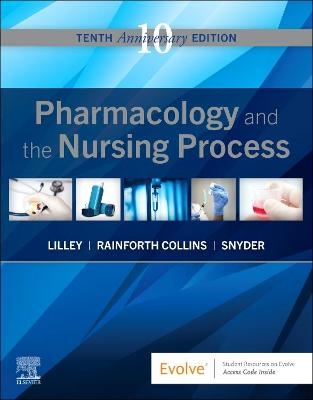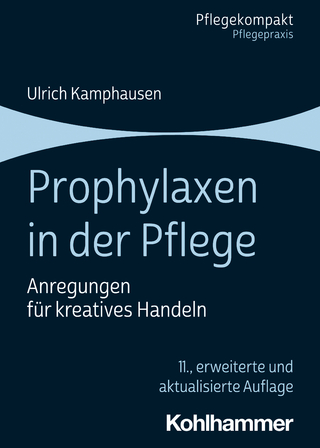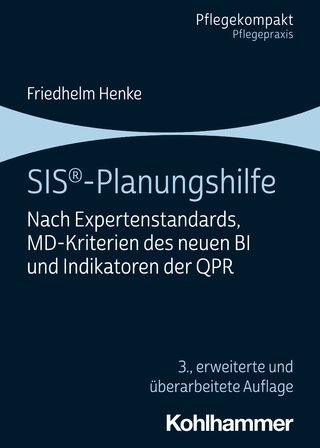
Pharmacology and the Nursing Process
Mosby (Verlag)
978-0-323-82797-3 (ISBN)
Focus on need-to-know information includes discussions of what nurses may encounter during drug administration in a variety of health care settings, providing accounts of real-life medication errors and tips for avoiding those errors.
The Nursing Process is applied to each category of drugs, ensuring that you administer medications accurately and safely, and includes the steps of assessment, human need statements, planning, implementation, and evaluation.
Emphasis on drug classes describes key similarities and differences among the drugs in each class, making it easier to understand how individual drugs work in the body.
Consistent presentation for each drug group includes the mechanism of action, indications, contraindications, adverse effects, interactions, and dosages, concluding with drug profiles of individual drugs in the class or group.
High-alert icons identify medications that pose a greater risk to patient safety.
Focus on prioritization includes prioritized nursing diagnoses along with a corresponding prioritization of goals and outcomes, to help you learn to connect nursing diagnoses with goals and outcomes.
Ease of readability makes difficult content more understandable.
Photo atlas features more than 100 drawings and photographs showing drug administration techniques.
Dosages tables summarize generic and trade names, pharmacologic class, normal dosage ranges, and indications for the drugs.
Learning features at the beginning of each chapter include objectives and key terms, and at the end of each chapter, key points, critical thinking questions, review questions, and a list of resources available on the Evolve website.
QSEN coverage includes the use of human need theory with human need statements, case studies featuring collaboration and teamwork content, Preventing Medication Errors boxes, and a discussion of the QSEN initiative as it relates to the safety and quality of patient care.
NEW! Updated drug content reflects the latest FDA drug approvals, withdrawals, and therapeutic uses, and includes updated nursing content.
Linda Lilley, RN, PhD, is University Professor and Associate Professor Emeritus at the School of Nursing at Old Dominion University in Norfolk, Virginia. Shelly Collins, PharmD, has decades of clinical experience in which she has been responsible for overseeing system-wide pharmaceutical safety. Julie S. Snyder, MSN, RN, MEDSURG-BC, teaches at the School of Nursing at Old Dominion University in Norfolk, Virginia.
PART 1: PHARMACOLOGY BASICS
1 The Nursing Process and Drug Therapy
2 Pharmacologic Principles
3 Lifespan Considerations
4 Cultural, Legal, and Ethical Considerations
5 Medication Errors: Preventing and Responding
6 Patient Education and Drug Therapy
7 Over-the-Counter Drugs and Herbal and Dietary Supplements
8 Gene Therapy and Pharmacogenomics
9 Photo Atlas of Drug Administration
PART 2: DRUGS AFFECTING THE CENTRAL NERVOUS SYSTEM
10 Analgesic Drugs
11 General and Local Anesthetics
12 Central Nervous System Depressants and Muscle Relaxants
13 Central Nervous System Stimulants and Related Drugs
14 Antiepileptic Drugs
15 Antiparkinson Drugs
16 Psychotherapeutic Drugs
17 Substance Use Disorder
PART 3: DRUGS AFFECTING THE AUTONOMIC NERVOUS SYSTEM
18 Adrenergic Drugs
19 Adrenergic-Blocking Drugs
20 Cholinergic Drugs
21 Cholinergic-Blocking Drugs
PART 4: DRUGS AFFECTING THE CARDIOVASCULAR AND RENAL SYSTEMS
22 Antihypertensive Drugs
23 Antianginal Drugs
24 Heart Failure Drugs
25 Antidysrhythmic Drugs
26 Coagulation Modifier Drugs
27 Antilipemic Drugs
28 Diuretic Drugs
29 Fluids and Electrolytes
PART 5: DRUGS AFFECTING THE ENDOCRINE AND REPRODUCTIVE SYSTEMS
30 Pituitary Drugs
31 Thyroid and Antithyroid Drugs
32 Antidiabetic Drugs
33 Adrenal Drugs
34 Women's Health Drugs
35 Men's Health Drugs
PART 6: DRUGS AFFECTING THE RESPIRATORY SYSTEM
36 Antihistamines, Decongestants, Antitussives, and Expectorants
37 Respiratory Drugs
PART 7: ANTIINFECTIVE AND ANTIINFLAMMATORY DRUGS
38 Antibiotics Part 1
39 Antibiotics Part 2
40 Antiviral Drugs
41 Antitubercular Drugs
42 Antifungal Drugs
43 Antimalarial, Antiprotozoal, and Anthelmintic Drugs
44 Antiinflammatory and Antigout Drugs
PART 8: CHEMOTHERAPEUTIC DRUGS AND BIOLOGIC AND IMMUNE MODIFIERS
45 Antineoplastic Drugs Part 1: Cancer Overview and Cell Cycle-Specific Drugs
46 Antineoplastic Drugs Part 2: Cell Cycle-Nonspecific Drugs and Miscellaneous Drugs
47 Biologic Response-Modifying and Antirheumatic Drugs
48 Immunosuppressant Drugs
49 Immunizing Drugs
PART 9: DRUGS AFFECTING THE GASTROINTESTINAL SYSTEM AND NUTRITION
50 Acid-Controlling Drugs
51 Bowel Disorder Drugs
52 Antiemetic and Antinausea Drugs
53 Vitamins and Minerals
54 Anemia Drugs
55 Nutritional Supplements
PART 10: DERMATOLOGIC, OPHTHALMIC, AND OTIC DRUGS
56 Dermatologic Drugs
57 Ophthalmic Drugs
58 Otic Drugs
Appendix: Pharmaceutical Abbreviations
Index
| Erscheinungsdatum | 30.06.2021 |
|---|---|
| Zusatzinfo | 280 illustrations (280 in full color); Illustrations |
| Verlagsort | St Louis |
| Sprache | englisch |
| Maße | 216 x 276 mm |
| Gewicht | 1990 g |
| Themenwelt | Medizin / Pharmazie ► Pflege |
| ISBN-10 | 0-323-82797-7 / 0323827977 |
| ISBN-13 | 978-0-323-82797-3 / 9780323827973 |
| Zustand | Neuware |
| Informationen gemäß Produktsicherheitsverordnung (GPSR) | |
| Haben Sie eine Frage zum Produkt? |
aus dem Bereich


